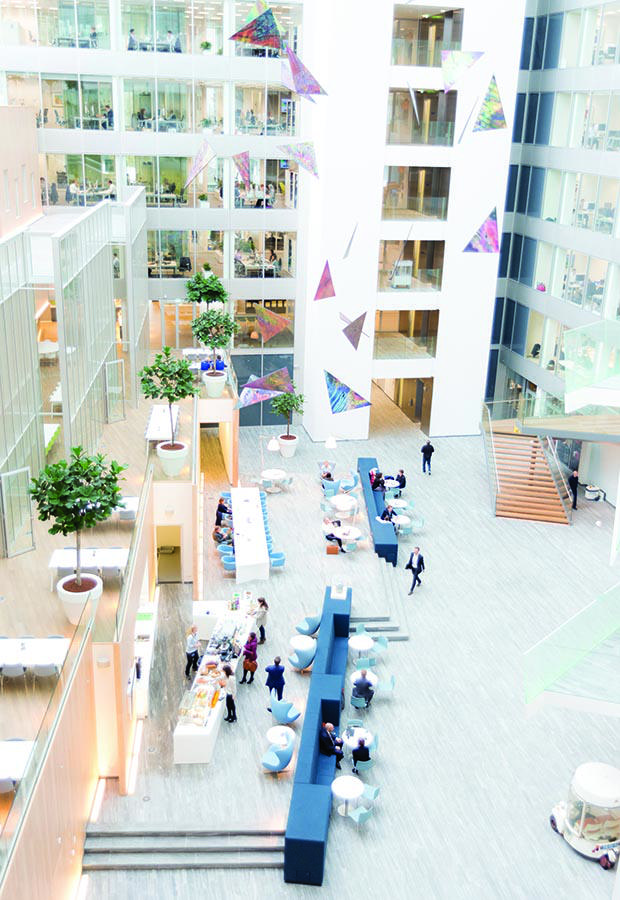Apps For A Smarter Building Future
From Schneider Electric.
Imagine an app-centric, human-focused work experience where the ease of use, real-time service and end-to-end visibility is translated into how your office space works.
There’s an app for that® has become commonplace since Apple introduced it to the world back in 2010. Apps are changing all areas of our lives, from booking restaurants and catching trains to dating and working out. Apps are leading the way in user- friendly technology and are bringing down established business dinosaurs in the process. The meteoric rise of the shared economy, with companies such as Airbnb, AirTasker and Uber, is causing massive disruption to the industries they are challenging. Through the use of an app, we benefit from a range of technology-enabled advances including peer-to-peer services, straightforward pricing, real-time booking and live tracking. The end-to-end service is totally transparent.
However, whilst we have embraced app culture in our personal lives, our work lives have struggled to keep up. Imagine an app-centric, human-focused work experience, where the ease of use, realtime service and end-to-end visibility is translated into how your office space works. The building is a platform that your app helps you to navigate; from setting your preferred comfort settings and deciding which workspace to head for, to booking a meeting room and locating colleagues. It’s clear that apps will be at the forefront of the next wave of the smart building evolution.
Back in the 1980s and early 1990s, there was a rush to create ‘intelligent buildings’, so called because they were able to cope with complexity and the spread of networked technology. The emergence of the PC and the local area network created complexity and the building responded with engineered infrastructure. However, in reality these were about conduits and risers, cooling and fire suppression and the provision of in-building data centres. The next incarnation, the first ‘smart’ buildings, came on the back of cloud and mobile technology. These were thinner buildings with smart technology and activity-based working that allowed a more agile and flexible approach to work.

We are now on the brink of a third wave of smart buildings, activated buildings with apps as the user-interface between the person and the building. This next generation of buildings is like a neural network of devices, sensors and equipment: connected, communicating, predicting and reacting. These buildings know what is going on inside them in real time and respond appropriately and actively. They are humanising the work experience for us.
There is a growing awareness in the Australian economy that innovation is vital for the nation’s future growth. The next generation of buildings must be able to support innovation, coupled with a move to more technology-focused jobs in order to increase productivity. Buildings are enablers of this economic activity, where better buildings produce better work outcomes. So whilst small and medium-sized businesses can respond to the challenges of growth and demand in an agile way, through the inventive use of technology and creative working arrangements, their real estate is often lagging behind. Big businesses often take longer to respond and have different or additional challenges, including attracting the right talent in an extremely competitive marketplace.
Europe is firmly grasping investment in smart buildings, with groundbreaking developments such as The Edge in Amsterdam and Le Hive in Paris. But Australia has still to fully prove its commitment in the commercial sector, despite embracing the technology in other key areas including healthcare and life sciences.
For years buildings have been inert, static containers focused on efficiency rather than what works. Unhealthy, unsustainable, inflexible buildings encouraged a uniformity where employees had to fit in and collaboration and communication were by chance rather than by design. We now need a new type of building with intelligence that is more human-focused, optimised for people with the help of technology.
The app is a symbol of this new wave; transparent, responsive, real time.
The Urban Developer is proud to partner with Schneider Electric to deliver this article to you. In doing so, we can continue to publish our free daily news, information, insights and opinion to you, our valued readers.
Top Image Copyright: ymgerman / 123RF Stock Photo
















